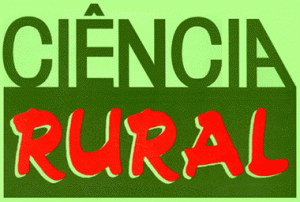Maria Luiza De Grandi, journalist from Ciência Rural, Santa Maria, RS, Brazil.
Serenella d’Ingeo, research of Università di Bari, Bari, Italy.
 Dogs are very popular domestic animals around the world, popularly known as man’s best friend. However, dog bites are one of the biggest public health problems, involving thousands of people all over the world. Although there are a variety of studies investigating this phenomenon in different countries, little information on the incidence of dog biting episodes in Italy is available.
Dogs are very popular domestic animals around the world, popularly known as man’s best friend. However, dog bites are one of the biggest public health problems, involving thousands of people all over the world. Although there are a variety of studies investigating this phenomenon in different countries, little information on the incidence of dog biting episodes in Italy is available.
Researchers from the University of Naples Federico II e the University of Bari Aldo Moro analyzed data on dog biting events in southern Italy’s largest city, Naples. The article Retrospective analysis of dog bites in southern Italy was published in Ciência Rural (vol. 52, nº 10).
The data used in the analysis date from 2010 to 2019 and were provided by the Regional Reference Center for Urban Veterinary Hygiene (CRIUV). CRIUV is a local health company dedicated to collecting dog-related records that can support the National Rabies Control Plan in the region. The results obtained by the researchers revealed serious and profound inconsistencies in data collection, revealing structural and significant weaknesses in the current data collection system.

Image: Steve Bidmead.
“Although a standard scheme was available for collecting dog bite detail data, we found that this tool could not provide a reliable diagnosis and an efficient method to assess all potential factors involved in dog bites” explain the authors.
The ideal report should take into account that the event of biting by the dog is multifactorial, therefore, it takes into account genetic, demographic, developmental, environmental and social factors. The analysis should also include information about the dog’s living conditions, the human-dog relationship, the owner’s attitudes, a detailed description of the context in which the event occurred (location, dynamics of the event, human and canine behavior preceding the bite) and, most importantly, the personality traits of the dog involved in the incidents. “All these factors must be evaluated by a veterinary specialist in behavior”, add the authors.
The study points to the need to improve the collection of all information related to the factors that affect the occurrence of biting episodes, for an accurate assessment of this phenomenon. “All of the factors illustrated above should be included in a standard scheme that needs to be adopted for data collection at the national level in order to gather reliable bite information. This forms the basis for future guidelines aimed at reducing the occurrence of scathing episodes in our society”, conclude the authors.
References
SHULER, C.M., et al. Canine and human factors related to dog bite injuries. J Am Vet Med Assoc [online]. 2008, vol. 232, no. 4, pp. 542-546 [viewed 25 April 2023]. https://doi.org/10.2460/javma.232.4.542. Available from: https://avmajournals.avma.org/view/journals/javma/232/4/javma.232.4.542.xml
To read the article, access
D’ANGELO, D., et al. Retrospective analysis of dog bites in Southern Italy. Cienc. Rural [online]. 2022, vol. 52, no. 10, e20210421 [viewed 25 May 2023]. https://doi.org/10.1590/0103-8478cr20210421. Available from: https://www.scielo.br/j/cr/a/G9ZhN8sN6b6w9LYtDpPm9Bm/
External links
Ciência Rural – CR: https://www.scielo.br/cr/
Ciência Rural – Website: http://coral.ufsm.br/ccr/cienciarural/
Ciência Rural – Social media: Twitter | Facebook | Instagram
Como citar este post [ISO 690/2010]:















Recent Comments